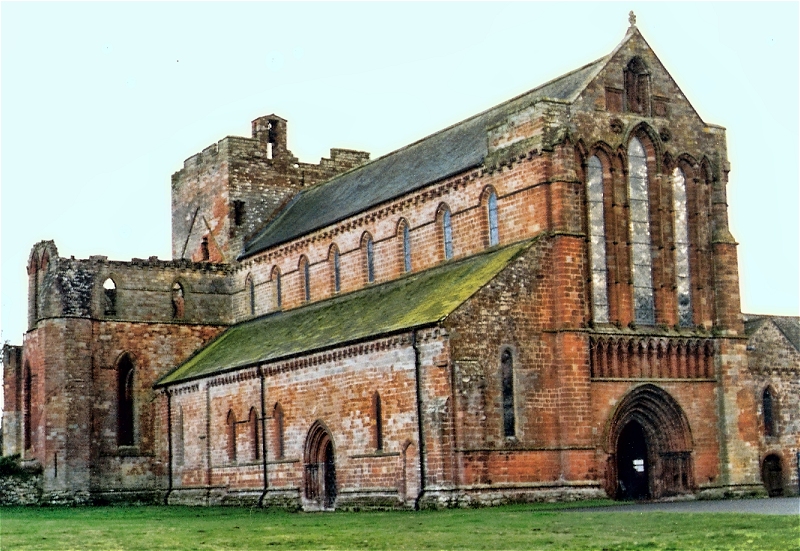
The weather has been very kind since I arrived only four days before, (can it really only be four days?) and I'm already shedding the first of my layers in which I dressed this morning, stowing my jacket behind the seat.
The sun is shining and the birds are singing as we travel south over hill and through vale, crossing streams that glitter brightly in the sunlight. We are headed toward Lanercost Priory, a place that is high on my "must see" list due to one of its most lasting and notable features – the Lanercost Chronicles. This narrative, written by the resident Canons during the 13th and 14th centuries, was translated by Sir Herbert Maxwell and is frequently quoted in historical analyses of the Anglo-Scottish Wars.
I am quickly reminded that it is Sunday as we pull into the car park. There is a service in progress here as well, inside the parish Church of St. Mary Magdalene, which has occupied the nave of the ruins since 1740. We show British Heritage passes at the visitors' center, and decide to take advantage of the audio guided tour for the first time. I find this both informative and distracting as I wander around taking in the wonders of the red sandstone remains. There are swifts here, many, many swifts who perform their midair ballet, soaring and diving in the open blue sky above the cloister.
Consecrated in 1169 and constructed of stonework from nearby Hadrian's Wall, this monastery which housed monks of the Augustinian order was completed around 1200. Lanercost is a ruin of vast proportions, but there were only about a dozen Canons who lived here.
Fine tombs are located in the old church, including the ornate altar tomb of Sir Thomas Dacre. There is also a heartbreakingly realistic tomb of a baby and a tombstone belonging to a Knight Templar, which pictures his cruciform sword in full size. The undercroft of the refectory is quite complete with evidence of masons' emblems scratched onto many of the stones. Previously used for storage, this undercroft, or cellar, now contains replicas of Roman altars from various sites in the locality.
The building was bought from the Crown by Sir Thomas Dacre, illegitimate son of a member of the Dacre family of nearby Naworth Castle. Dacre turned Lanercost into a private house. When this branch of the Dacre family died out, Lanercost reverted to the Crown.
As we prepare to leave, lingering in the cloister, two gentlemen walk through the entry archway. They appear to be discussing the merits of the using the cloister area for a performance of some sort. One man gestures and speaks a dramatic line; his stage voice booms out in the stillness. He smiles in our direction, almost apologetically, then moves on busily to another area of the ruins.
I smile, finding it difficult to imagine being a local resident and seeing these hallowed ruins every day, visiting them in the course of day to day life. After a quick peek into the gift shop we are back in the car and into the countryside once more.
The road is bordered with wildflowers, the trees on either side form a canopy over this stretch which is little more than a single track road. Sunlight breaks through as we pass an open field on the right. In the sky, a crow and a hawk of some sort are having a disagreement, with the crow continually harassing the hawk until they appear only as tiny dots in the distance.

Lanercost Priory was founded by Robert de Vaux between 1165 and 1174 to house Augustinian Canons. It is situated at the village of Lanercost, Cumbria, England, within sight of Naworth Castle, with which it long had close connections.
The proximity to Scotland inevitably had an effect on the fortunes of the priory, and it was a target of Scots attacks in retaliation to English raids.
This became acute after the outbreak of the War of Independence. In 1296 the Scottish army encamped at Lanercost after burning Hexham priory and Lambley nunnery.
Edward I made several visits to the priory in the latter part of his reign. In August 1311, Robert Bruce, King of Scotland, came with his army and made it his headquarters for three days.
Read more about Lanercost Priory at Wikipedia.